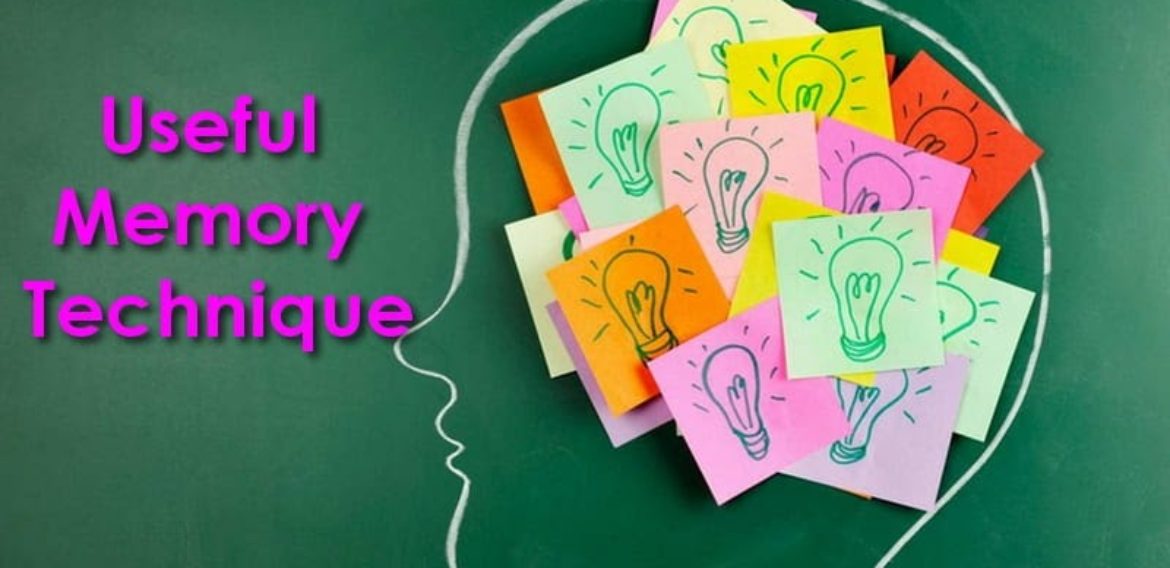- مريح
- عادي
- رمادي
- مظلم
Memory Strategies That Really Work
Some people have a knack for memorizing things. Consider the card counters who play blackjack in Las Vegas. They beat the house by keeping track of played cards and calculating the odds of being dealt a winner from what’s left.
This is a minor feat compared to achievements in the USA Memory Championship. In 2013, entrants in this annual competition were challenged to memorize a staggering amount of information, including a list of 200 words, 25 rows of 20-digit numbers, the names of more than 100 people, and even a poem, complete with line breaks. The participants don’t get much time, either: about 15 minutes per task.
These memory superstars rely heavily on mnemonic devices, shortcuts that make it easier to remember things. Such strategies can be simple or complex and often involve imagery. The beauty of these devices is that anybody can use them—plus they’re a lot of fun. Here are six that can help you remember everything from where you put your car keys to the name of that person you just met at a party:
1- Prolonged Attention :
Do you tend to misplace things? Try giving an object a good stare when you put it down. Remembering the context makes it much easier to recall the scene later.
Saying out loud where you place the item can help, too. So can paying attention to other sensory stimuli that are part of the scene, such as the smell of something cooking in the kitchen.
2- Acronyms :
From ASAP in office settings to LOL in emails and texts, acronyms help us get to the point faster. You can create your own acronyms to expedite your recall of specific items or lists.
Suppose I want to buy flowers for my wife, Linda, for Mother’s Day. I ask her what her favorites are and she names irises, lilies, and daffodils. I can take the first letters of the key words and make them into an easy-to-remember acronym : LINDA (L= lilies, I = irises, N = narcissus, a form of daffodil, DA = daffodil).
3- Rhymes :
“Thirty days hath September
April, June and …”
This time-honored standard has helped millions of people remember how
many days are in each month of the year. Rhyming words tend to be easy to remember and help propel us through a series.
This technique gives you a chance to flex your creative muscles. For example, I used to have trouble remembering people’s birthdays, so I started using poetry to jog my memory. Here’s a rhyme from my “Ode to [Name]’s Birthday” series:
“Chris, I remember
Was born in September
I’ll gift her a gift
The day of the fifth”
It’s not Wordsworth, but it does the trick.
Want to Remember More? Go Back to the “Classroom”
Research shows that we tend to recall information better in the setting where we learned it. One study found that scuba divers who studied a list of words underwater could recall them better afterward when they were underwater rather than on land. Good thing students take tests in the classroom!
4- Learn Things in Their Real-Life Context :
Let’s say you want to remember a grocery list without having to write anything down. You’re more likely to keep the list in your head if you look around the kitchen and visualize the items where they’ll be placed. Need eggs? Dishwashing liquid? Peer into the refrigerator and under the sink and “see” them there.
5- The Memory Palace :
This strategy for memorization supposedly dates back to ancient Greece and Rome. It involves choosing a place you’re familiar with, such as your house or a favorite scenic area, then “placing” images of the items you want to remember next to landmarks within that space. It helps if you spread the items along specific routes in your chosen location. Associating the items with familiar locations helps solidify your memory of them.
Eight-time world memory champion Dominic O’Brien used this technique to memorize 54 decks of cards in sequence—a total of 2,808 cards—after viewing each card only once. In the 2013 USA Memory Championships, runner-up Nelson Dellis used the memory palace to memorize 302 random numbers in five minutes.
Here’s a less daunting example. Let’s say I just started teaching a writer’s workshop and I’m having trouble memorizing the names of my students. I picture each in my living room, positioning each person near something that allows me to use alliteration to lock the name to the image. There’s “Terry TV” watching a show. “Carl Couch” sits next to her. “Wendy Window” is looking into the backyard. “Steve Stairs” is heading up the stairs. “Rhonda Rug” lies on the floor. And so on. When I want to remember the names, I visualize my house and see everybody in his or her designated location.
6- Bizarre Images :
Imagine seeing a mob of people in a train station. One person has a bird standing on his head. A month later, which person are you most likely to remember from that crowd?
You can use your own imagination to create unusual images and associate them with what you want to remember. I find this technique especially effective for remembering someone I just met at a party or business meeting.
Suppose you’re introduced to Robert Smith. You could visualize him as a blacksmith with his hands up during a stickup. The image itself is memorable and holds clues to his name: ROB ber holds up black SMITH.
This technique can work for other types of memorization, too. I used to get frustrated when I heard a song I liked on the radio in my car but couldn’t remember the artist or song title, even though I saw the digital readout and repeated the names to myself. Poof! The information was gone by the time I pulled into my driveway. Then I started using bizarre imagery, and I’ve remembered every tune since. Here are a few examples of images that saved songs in my memory:
– “Fluorescent Adolescent,” by The Arctic Monkeys: Glowing teenager stands inside an igloo feeding chimpanzees
– “10 Mile Stereo,” by Beach House: Endless lineup of sunbathers on the Jersey shore wearing headphones, with bungalows in view behind them
– “Metal Heart,” by Cat Power: The Cowardly Lion from The Wizard of Oz raises a paw defiantly in a fist as the Tin Man shows him the heart the Wizard gave him
Such codes may seem elaborate, but you might be surprised by how well they work, partly because they come from your own imagination. Give it a try!
By : Ed DECKER



 English
English
لا تعليق